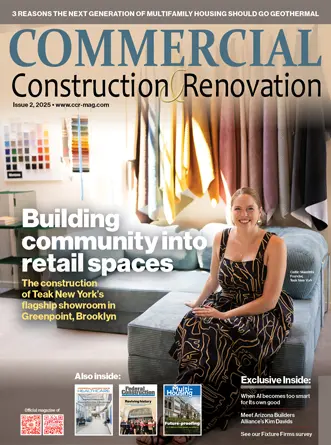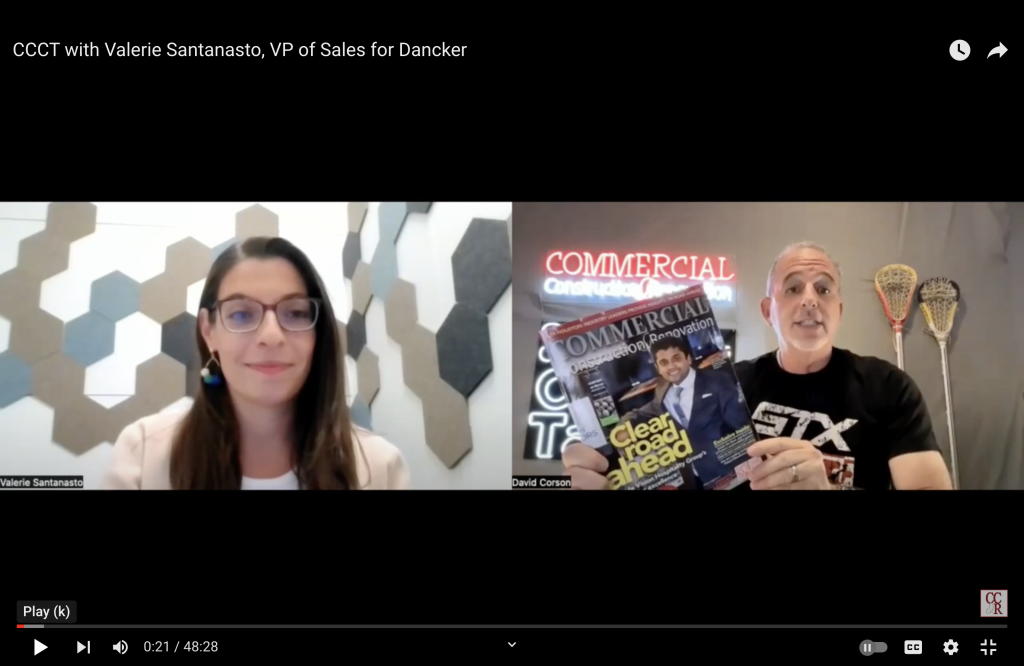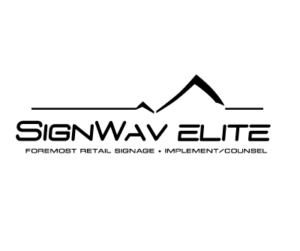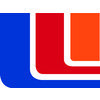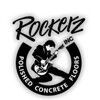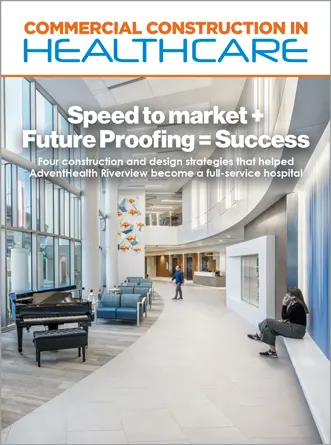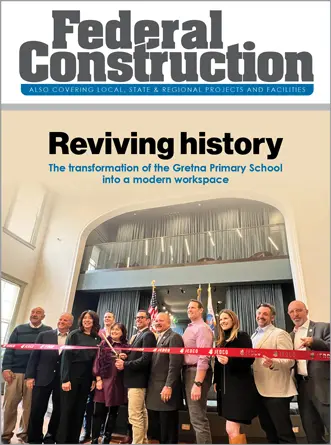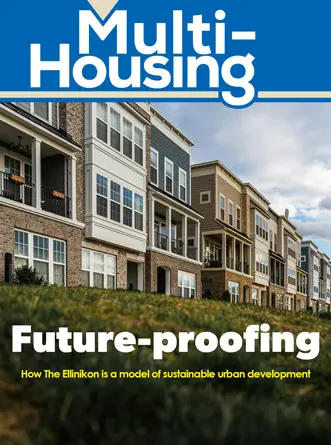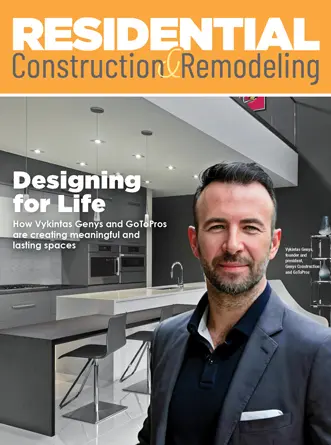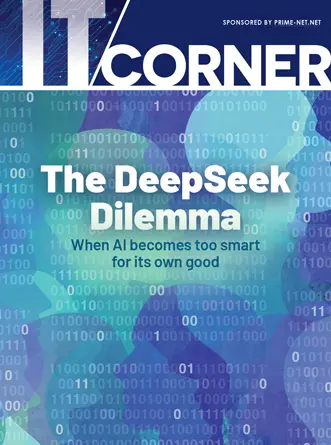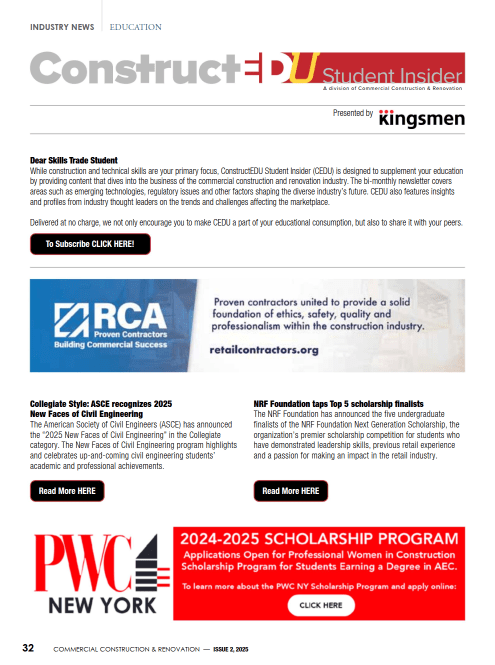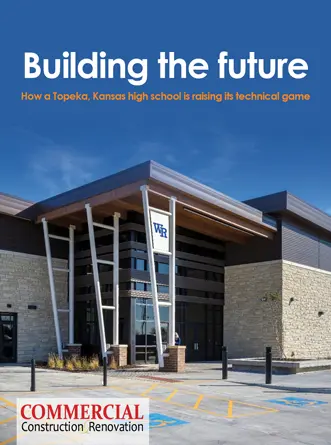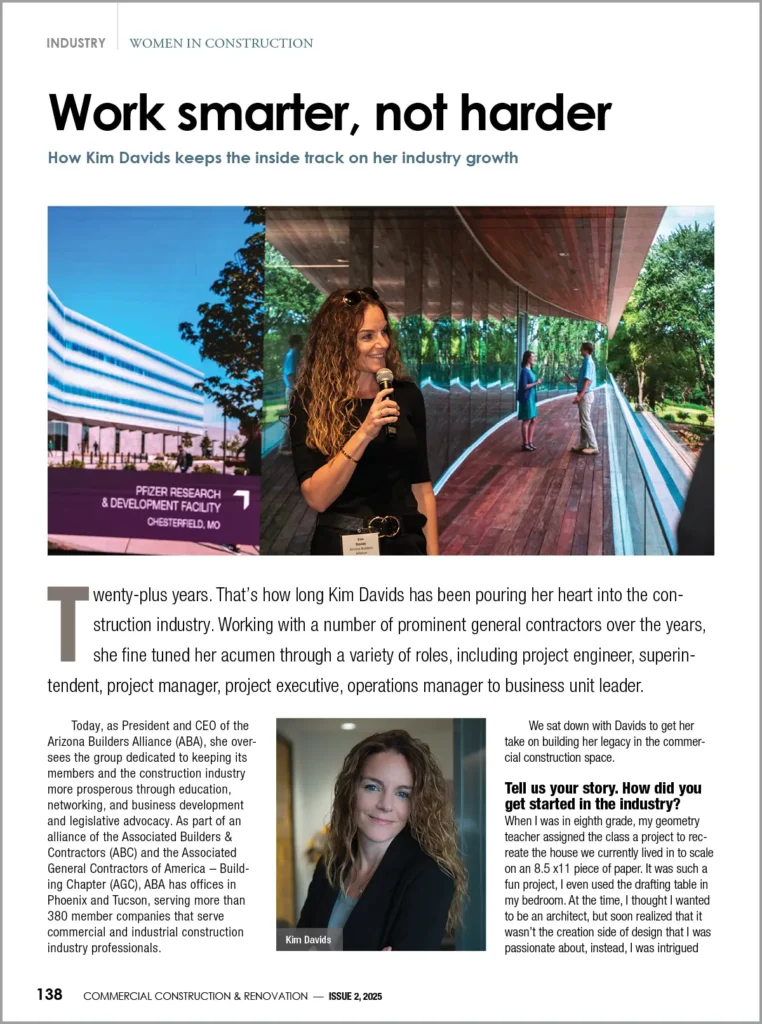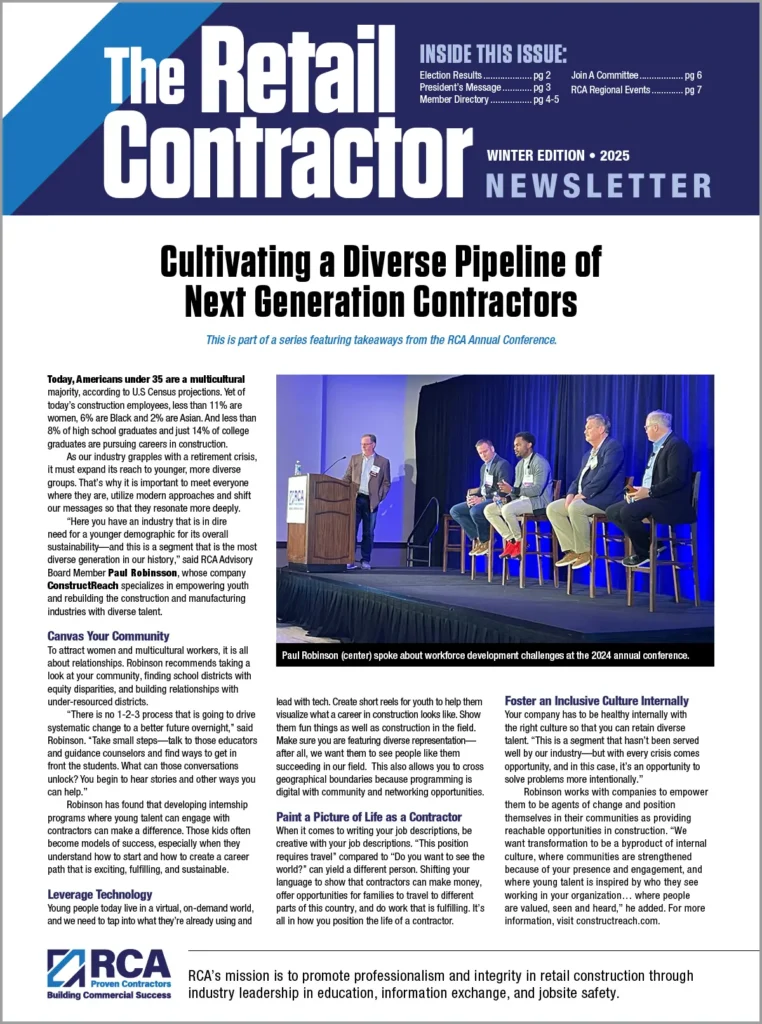CCCT with Valerie Santanasto, VP of Sales with Dancker Video

CCCT with Valerie Santanasto, VP of Sales for Dancker. Collectively, they are driven by the question: What if they didn’t exist in the marketplace? Would they be missed? This question drives everything they do and influences every touch point of our engagements with their clients, vendors, and partners. They are passionate about the solutions and services they offer: Furniture, Architectural Solutions, Workplace Technology, Paint, Wallcoverings & Imaging, Asset & Inventory Management, Facility Management Support, and Technical Services. But most importantly, their behaviors are what they want their clients to remember.
#furniture #facilitymanagement #integrators #technology #fixtures #technicalservices
Transcription
Hey there, Commercial Construction Coffee Talk fans. Thanks for chiming in. My name’s David, of course, and I’m your host. I’m also the publisher and editor of Commercial Construction Renovation Magazine. This is what it used to look like. We’re digital now. Actually, I’m bringing out the archives. This is January-February 2016. Mr. Hinton Patel from Vision Hospitality out of Chattanooga, Tennessee, just up the road about an hour and a half across the border from Georgia. Anyway, Hinton, you owe me a story on that church you were building out in, I think it was Utah. So send it to me. We want to feature it. Anyway, this was a really good-looking issue, 154 pages, and I was looking to see what I was talking about on my publisher’s page. Oh, I’ve got my son here. There he is, Brody. He’s looking pretty young there. Now he’s at Boeing. But I think this was on my birthday. Anyway, yeah, he just, I was probably just getting ready to go to mechanic school and do all that good stuff at Delta, but anyway, he’s at Boeing now in Charleston. But anyway, that’s what the magazines look like. We went digital. Last issue we printed was August of 2021. We had White Castle VP of construction on the cover, and they had their biggest restaurant they had ever built, and haven’t looked back since. About 29 million people hit our website last year, and I’m just cruising along. I was just looking at my stats today because I’ll go over another two, two and a half million this month, and if I keep up that momentum to the remainder of the year, I’ll probably break 30 million, maybe go a little further. So for all you out there that have been consuming our content, and I know, you know, that is addicting, just makes you come back for more. It’s like a really good steak. You gotta go back to that same restaurant and get that meal. Really appreciate you hitting our site and consuming that content. I know it’s, you know, I’ve become a digital guy. I’m in my third boot camp. I got class tonight. I’m doing, just got over 10,000 followers on my TikTok, my business account. I’m just rolling. It’s just insane how quickly technology has gone, you know? And you know what’s crazy is the guy’s teaching me the class right now. He said, “You know what? After you get done with this eight weeks, all everything I taught, she’s probably gonna be obsolete because everything’s at warp speed with AI and stuff.”
So it’s, but you’ll have the right foundation to do push-button 101. And that’s really what digital is, you know? It’s just making sure everything goes in there. But I hope everybody’s having a great week. It’s beautiful out here in Atlanta, just sunny. It’s hot and humid, you know, that’s the South for you, but I think that goes across the country. But just been beautiful. Did have some wicked storms here came in last week. I was up in Milwaukee for a reception and my wife had no power for about 24 hours. Had some real high winds, knocked trees down all over the ATL, snapped them like toothpicks. They said there were tornadoes, but anyway, there was just a lot of debris. But we’re getting back to normal here. I came back, flew back Friday, and I’m driving through from the airport, and I’m just looking at all the destruction. And of course, you know, probably the national news didn’t talk about it, but there was a lot of damage here. And one of my buds who’s building his house up on the lake, we’re ready to break ground, our empty nester house, he had 10 huge oak trees that had to be like 300 or 400 years old. They were signature trees when he cleared his land. He left them there, and they all got knocked down by the storm. And he did this video I saw him on Facebook, and he was just, you know, you could hear in his voice, he was just so devastated. But you know what? That’s Mother Nature. You can’t control it. So anyway, we’re getting our act back together here.
In Atlanta, and all the debris and stuff is pretty much dwindled, so we’re in the dog days of summer. School’s gonna start here in the South here in a couple weeks. Kids, get ready, the bus is coming early, seven o’clock. And you know, I grew up in Philly, so we went back to school after Labor Day weekend, that was the gig. You go down to the beach, you hang out, you come back, time to go back to school. You look in the paper and see what’s what class you were in and your friends were in there and all that stuff. So with that said, got a nice guest, actually from one of my favorite states up north in New Jersey. I’ve got Miss Valerie Santonasto, did I say it right?
You got it! Oh my God, I didn’t butcher it. Thank you so much.
And she’s with Danka, and they do integration with a lot of things, and you know, in the commercial sector. So, Valerie, say hello from Somerville, New Jersey to our listeners out there in Commercial Construction Coffee Talk.
Hello, it’s great, yeah. You got a really cool black background though behind you there. So, you know, it’s nice, you know, some people have some, you know, they just go and nothing behind them, but I like your background, so, really, really cool.
So the reason why I had Valerie on here is, you know, projects, integration, and Danka does all sorts of things, and they’re into that workplace, and making things, you know, as things evolve as we go into the future, they’re there to help you. So that’s why as we kind of flow into the, you know, Q3 and Q4 and the remainder of the year, and we get ready to close out 2023, and believe me, it’s going to be here before you know it because, look, school’s starting in two weeks, got Labor Day weekend, a couple months later, you got, you know, Halloween, Thanksgiving, and then boom, the holiday season’s on him, before you know it, it’s going to be December 31st, I’m going to ring in 2024. I can’t even believe, let me even saying that because it just feels like I just rung in 2023, and it’s this year is just, I think it’s the fastest year I’ve ever had. I turned 60 at the end of June, so it’s just, you know, I can’t even believe I made it this far. It feels like yesterday I was just graduating prep school in at Petty, you know, off Exit 8 off the turnpike. So anyway, Valerie, this is the way it’s going to work. We do our episodes in three parts. You’re going to tell your story, where you grew up, brothers, sisters, played any sports, where you went to school, and how you ended up where you are today. Then we’ll talk about the last three years of the roller coaster that we’ve all been on, any lessons learned, and any cool projects that you’ve been working on. And then you’ll leave one positive thought or phrase for our listeners out there in Commercial Construction Coffee Talk. And with that said, the floor is yours. Tell us your story.
Thank you. Well, and happy birthday, by the way.
Oh, thank you. Thank you. I appreciate that. Yeah, so luckily, we go back after Labor Day too, so we got a little extra summer up here. Um, yeah, so my name is Valerie Santanasto, and you get major points for pronouncing that right because that doesn’t happen that often, so I’m impressed, David. Um, so I’m with, I’m with Danka, and I’ll explain a little more about what we do. But my story’s, I’m a girl from Brooklyn, um, who ended up going to Fordham, and I was studying urban studies, and I happened to meet somebody from Steelcase at the career fair, and that pushed me into the commercial interiors industry, which I had never anticipated being in. Um, planning a city is actually not unlike planning an office space or planning a workplace in terms of things like budget constraints and politics. And it’s surprisingly close, so something I didn’t anticipate going into, but I think a really good fit. Um, I worked for Steelcase for 14 years.
In a variety of roles, but my favorite and the one I did the longest was in global accounts, and I got to work with a handful of major global organizations as they transformed their workplace. So, it was right, you know, after the, you know, 7:08 shake-up, and got to see firsthand, you know, people coming out of offices and some of those changes that now seem, you know, pretty routine but at the time were, you know, groundbreaking for people. This is fascinating to watch the people aspect of change, and it’s something I’ve been really, really passionate about since kind of watching all of that firsthand and being part of those things. So, I moved over to Danker just before the pandemic. I’m a mom of two, which was an interesting time, so I have a six- and eight-year-old. They’re great ages because they’re a little independent, but no one’s driving yet, so we have this really great sweet spot that we’re enjoying, and I have a great husband. I met him at Fordham. He is not in our industry, and I think he can’t believe what we actually do sometimes. The drama, um, but he has worked at two of our clients, so it’s always been interesting to hear the end-user perspective, especially now, obviously, with the return to the office, and he’s like, “What are these pods everybody’s sitting in? It looks like a phone booth.” Yeah, yeah, it’s so you can have some privacy. Hey, listen, I give anybody that has, uh, more than one child—I mean, I have one son, we have dogs, you know, I think we have four dogs, my wife’s a rescuer—and it goes really quick. And, um, anybody that has more than one child, to give them total credit because it’s just double the, you know, you think one child is tough. I was just listening to a YouTuber yesterday, and he was, he was saying, “Oh, I just found out my wife’s pregnant.
I can’t even handle this one,” and he’s still, you know, he’s only, he’s still in diapers, and now we’re gonna double down. I’m like, I don’t know, but it was really good. So, anybody has two kids, hats off to you, you know, because I know it’s, it’s hectic, you know? And, right, thank you, no, it’s totally hectic, but, you know, as you say that, I think my counterpart, uh, one of our counterparts at Danker has four, and so I’m like, you know what, I think I got this under control. Hey, I was up in Milwaukee last week, we had a reception up there, we took a tour of the Harley-Davidson, and one of our, one of our sponsors, he has ten kids, you know? And, uh, I was like, oh my God, how do you do it? He’s like, oh no, you know, they’re pretty much all out of diapers and, you know, ten kids, you know, you do the math, you know? If you do one every year or every other year, you know, it’s a, it’s a decent span, but, you know, he says, you know, what, you have one, you have four, you know, so like we have four dogs, if I’m gonna go feed one dog or four dogs or do poo patrol every Sunday, ah, what’s a, what’s a little heavier bag or whatever, but, uh, you know, it’s, uh, uh, all the power to you all out there that have kids, you know? If I had to do it over, but you gotta have kids, you, in my opinion, you gotta stay in diapers, you know? Once you’re once you have one in diapers, gonna do another, you know, have your son, so they’re both in diapers though, because once you get out of diapers, it’s very tough to go back in, that’s only my opinion. I agree with that, no, I agree with that, I think once you leave the house and you don’t need anything besides your house keys, there’s very hard to go back, yeah, exactly, so, you know, we do the dog gig and, uh, you know, every night I was like, oh, can we do the foster, here’s the foster, we need to do, so I’m like, whatever, you know, you know, 95% of me is negotiable, you know, and and I’m easy going, the other 5% is not, but you know, when my wife says, you know, hey, we wanna do that, I’m like, whatever, what’s another dog.
It’s okay, you know, we’re, I’m okay with it, so, um, well, Steelcase Furniture, correct desks and all that, you know, I walk a ton of shows, so I always see Steelcase at maybe IFMA or I Team at NeoCon. Or uh maybe at the International Contemporary Furniture Fair that was in Javits over the years, so very familiar and uh so you had that, you know, kind of office fixture background going into Danker to get into that integration because you had that, correct? Yeah, so, so Steelcase, you know, really primarily in the furniture world, had played a little bit in technology but really primarily, you know, outfitting space with furniture, right? In whatever mode makes sense for the clients but um what I really liked about Danker was that they had already started to expand into other things so Danker were an interior integrator so we have the furniture division which is really, that’s how the company started so we’re almost 200 years old so we’re one of the oldest privately held companies in the Northeast and we started with roll-top desks so every once in a while I’ll get a phone call from somebody who’s like hey, you know, I saw you guys online and I have this desk in my basement, it was my grandfather’s secretary desk, has a little Danker and it says, uh, TJ salute on it, so every once in a while you get one of those calls, we have one in our office which is really neat um so we started, you know, in in the city making those kinds of desks and over time realized that you know furniture is one piece but it’s really hard, especially these days and this was pre-COVID but now absolutely, um, you know, to just think about the, the desk or the conference table without thinking about how people are using it and what technology is going into it so we started an AV division a couple of years ago but this January we actually bought um, a company called DBE in DC, they’re this awesome AV integrator to really enhance what we can do so you know putting a screen on a wall is one thing, right.
But really thinking through the acoustics, the all the different parameters that make this a really great experience so that we feel like we’re in the same room, it’s a huge deal and it’s it’s part of how space gets built, right, but it’s not always how partners come to the table, people come in piecemeal and so our goal is to be able to look at everything holistically so ideally we can provide it holistically but even if our client already has a vendor at least we’re looking through the lens so that we can create a great space so we have furniture, technology, we do modular construction um we do logistics we have multiple warehouses we do all kinds of fun stuff PPE distribution all kinds of those guys say yes to everything and figure out a way like they’re they’re a fun group um and then our and then general like office front and architecture so it allows us to look at a space if you have a building shell we can figure out you know how to get everything into it and so we partner with clients and a d firms to do that and as the sales leader I get the benefit of being able to look across all of our customers and see what they’re doing so we work with small customers a lot of the Fortune 500 national clients and to me this is really the most interesting time we’ve ever had in our industry because everybody’s talking about space everybody cares return to office is a thing right when I was working on the manufacturer side it was still you know your real estate folks are in the room maybe facilities procurement and now the meetings we’re having I spoke at an HR event recently you know where it’s about the people it’s about real estate it’s it’s a much broader strategy we’re speaking with the c-suite in a way that this is on their agenda we didn’t try to get in there they’re asking us so it’s a really fun time to do what we do it’s a little crazy um right now as everyone tries to figure out what’s next but it’s it’s a really relevant discussion that I don’t think was as relevant beforehand.
So it’s it’s been really fun yeah you know it uh when I look back over you know everything that I’ve done my parents are in upholstery furniture so we used to I have a showroom on the 32nd Lex and uh I did my retail training at Levitz and I put a ton of those uh brass tables together, and I did Scotch guarding. I did so furniture, you know, but you’re in that kind of a little different segment of furniture, but still, it’s furniture, you know? People have their ideas of where that, you know, if they’re going to buy upholstery, you know, are they going to do a loveseat or are they going to a club chair? They can, you know, so all of those things, whether it’s residential, commercial, everybody’s kind of got to have that vision. But let me ask you this, so looking back 2020, the beginning of 2020, everything’s cranking and then boom, everything gets shut down. So being, you know, in that real estate component, per se, with interiors and everybody is kind of working out of the house. Some people were still in the office, but the majority people were hybrid or they were, you know, at home. And now three years later, you know, we’ve come out out of the roller coaster and um, the biggest thing is getting people back to work. They want to go to concerts, they want to go to ball games, they want to go to the beach, they want to do all those things, but a lot of them don’t want to go back to the office. And I don’t blame them because they’ve proven themselves that they can get stuff done and be as productive or more productive at home, but the business owner or the company, they want to keep that company culture. So having that vision of how am I going to entice my my employees or workers, call them what you want, the people are going to get things done to keep the momentum going to come back, it’s got to be a challenge especially today because um, I just saw a report where commercial real estate was at 49 47 percent occupancy. It was just a low number that they haven’t had and I was up in New York at a reception we in May and a lot of the New Yorkers told me they said listen no one’s in the city on Monday or Fridays everybody comes in Tuesday Wednesday Thursday if they’re hybrid those are the one they’re going to do it and we’re joining events in September so they don’t do don’t do your event on Monday or Fridays do it Tuesday Wednesday Thursday and you’ll have a pretty good turnout so but it was interesting to you know talk to people because some people were hybrid some are back to the office some are still working out of the house they come into the city when they need to and um and by the way I took the subway.
When I when I went in I stayed out at uh at Citi Field I flew in I was blown away I flew into LaGuardia back in may actually I was in New York twice I flew back for the reception in a couple weeks later with the jobs for the for the lighting show but anyway I took the subway in it was safe not a big deal and uh the city looked great uh you know not as busy as it used to be but it looked like it was getting back to uh normal per se and uh but the one thing that they they they said that you know it’s just uh it depends on where you’re living and you know what type of company you’re working for but the biggest thing is is how do we get people to want to come back to the office and being in that all office so when the someone you know when everything got kaput uh what was your frame of mind and how did you weather that storm over you know because people were furloughed offices were closed I mean just like myself I had I was fighting with my printer for this magazine and I was like look I’m gonna print this thing and half of them are going to get thrown in the trash because the offices aren’t open you know it’s a waste of paper and postage and then finally I just said you know my artist and my editor are like let’s go digital we have all this content and I’m like okay fine and I had a digital magazine I was lucky I had one so I could pivot I hate using that word now but anyway we pivoted and boom we haven’t looked back since but that I went through that same thing so you being in that sector where All the stuff was being, you know, just, you know, serious momentum in the first quarter of 2020 and then bam, you know, everything stopped. You know, how did you weather the storm and you know, maybe some lessons learned that you know, our listeners out there or Commercial Construction Coffee Talk you know with find a value? Sure, yeah. Well, I so I started in the fall of 19. So great time to start as a sales leader right before the entire world shuts down.
And yeah, no better time than the present to get your feet right, yeah. I learned a lot, um, yeah, the beginning was a little bit crazy because we were going through more of the technical challenges around jobs that were in the middle of construction and repeated shutdowns and some of that just logistical chaos that went on and you know manufacturing if you’re weed supply products from over 200 manufacturers are trying to figure out what states are open and whose clothes that whole thing was was a little crazy, um, but I think in general, you know, trying to figure out where the headwinds were going in terms of when people started bringing people back, what would that look like, what would they need? Um, our Health Care Division they never stopped, our Ops guys were out there all the time, we set up thing like we have a very large Healthcare um client base and so they were Full Speed Ahead and you know whatever they needed we figured out and some of our suppliers did some really amazing amazing work during that time and it was a testament to some of the people that we work with and definitely our operations team and what they were able to do. So that group just full steam ahead the whole time um, for the for the more traditional corporate side, that first summer I think people would start allowed come back in New Jersey and maybe the end of the summer, it was a weird Twilight Zone right, you’d walk through offices and you’d have calendars to a certain date, people’s lunches, it was like a very eerie very strange time. Now I had two kids and a husband all working from home in 1400 square feet so as soon as this office door unlocked that was in the parking lot ready to come in, um, so everybody had their own you know their own home situation some are Cozier than others and I think early in kova that really helped Drive whether or not people were coming back I would say in the last you know from the beginning of this year forward right so let’s look at January forward.
I think we really have a clear path where the safety is not the issue right there was still a little bit of you know ups and downs for 2023 safety’s not the barrier to why people aren’t back right they the I think the big theme is we’ve given people more choice and control about how they work when they work and where they work than people have had you know since the Industrial Revolution started and so trying to wrestle that back is not going to be an easy feat and it may not be a worthwhile one you know so we most of our client base is hybrid whether that’s two days three days four days there were very few people who’ve gone all the way to fully remote and very few people have gone all the way to five days unless you’re in a more operational or you know something where it’s it’s clear you can only do the work in person so the vast majority are trying to figure out how do you give people that balance with a version of hybrid but figuring out what that looks like varies dramatically right so we have our one day a week in office people we have our three day weekend office people or we ask people to come in three days and then when you talk to facilities and you look at the badging data nobody’s here anyway so there’s that whole spectrum of what people ask and what’s actually happening and at the end of the day I think it really comes down to you know you start to talk about it leadership understands the benefits of having people come together right it’s very hard we hear from HR leaders onboarding new people and the amount of turnover for people who’ve started in a more remote or a Hybrid environment versus what it was like before is much higher even if you adjust for some of the norms that have happened where we’ve had spikes and you know how people move around that training development mentoring, you know how do you get the knowledge from a senior person if they’re in an office at home and a junior person who’s in an office at home and they don’t know each other, right?
There’s a real people’s side to onboarding mentoring and engagement and belonging that I think the office serves a purpose for that’s people are having trouble doing virtually. The issue of trust building is one that comes up a lot, so you know you and I were looking at each other, right? If we were doing this solely over audio we wouldn’t develop the same rapport and imagine if you and we were sitting in the same conference room, so the idea of you know trust building and if you’re going to innovate you need to trust the people you’re taking risks with. There’s that whole chain of innovation, right? So if I don’t trust you, I won’t take risks, if I don’t take risks, we won’t innovate, you don’t get the feedback fast enough. There’s a lot of reasons why companies want people together. They’re trying to figure out what that balance is, right? Because on the employee side you have, you know, you have four dogs I before covered or whatever we’re calling this, right? Would have never gotten a dog because I was traveling and I would never be able half my team they’re in sales they would have never had dogs, have them got dogs during COVID they’ve always wanted them they finally got a chance. People are having dinner with their kids, they’re, you know, I went to register my daughter for gymnastics I was the only one in dress clothes everyone had already been to the gym, that’s a quality of life you couldn’t even imagined.
So taking you know people who have now found a new well-being, you know or a new support structure or care structure where they’re not dropping their kids off at 6 a.m. and picking them up at 8 p.m. they don’t want to go back to that and so trying to figure out that balance is important for each and every company and they’re handling it a little bit differently so it’s been really interesting to watch, you know, we’ve had some early adopters who’ve who’ve learned things and I think one of the one of the early things that has been interesting is the you can’t just say it and hoping it’ll happen right you can’t just say we’re open and expect people to show up and you also and this hurts hurts us as a you know someone who builds beautiful spaces if you build it they will come is not a thing you can’t just build it because it’s it’s a holistic model that needs to be addressed we can create amazing spaces you can have great Tech but if the cultural piece and the process piece and the accountability piece is not tied in it doesn’t matter if it’s the greatest space on Earth you can’t just build pretty things and hope people come it won’t happen so we had some people invest in in these great spaces but without a more holistic strategy and I think what people are learning is it’s the people strategy tied into the spaces that work and the technology that makes it a great experience and the amenities and the way to give people ways to socialize with each other you really have to think through that whole spectrum of what you give your employees and I think for us that makes it an exciting time because we’re not just building spaces that look great we’re building spaces where people actually are drawn to and they get to know one another and it’s a cultural asset to the company.
It’s a physical manifestation of your company of your culture it’s a physical touch point and so when done well it it’s a great asset and so it’s not just this thing on the balance sheet everybody wants to get rid of it’s this hub that has a real function and a real purpose and so it’s it’s been really great to see you know as people start to dip their toe in and figure out what Does that look like for them you know we’re starting to build spaces that really do attract people and we say it’s got to earn the commute, right? It really does have to earn the community has to be worth it to get in the car and come to the office and I personally commute I’m up in Nutley so we have great Italian food but it’s an hour and 10 minutes from where I sit talking to you today and as a leader in the company for me it makes sense to be in four days a week because my team’s all over the place we’re a big group and I’d rather be with them and it makes sense for me there isn’t there’s in for leadership there’s a I think an easier value proposition because you’re leading your team and you’re you know you have an upper management just it’s a little easier for the day-to-day employee what are those benefits right you have to understand why are they coming in what kind of space would earn the commute um a couple of buckets of stuff that I think are being incorporated into most of the offices um if that would be helpful what are the big what are the big takeaways you know that we’re seeing implemented um I think the choice and control piece is a big one so giving people options when we send everybody home we just said take your laptop or whatever it is and go and then they went home and they picked where they wanted to work do they want to stand they want to sit do they want to lay on the bed do they want to sit on a couch did they want to go work outside and through video we saw all kinds of choices right I sit in my son’s room.
Because that’s where I can see in the backyard and I like looking at the trees and they sweat in the wind oh yeah that’s my choice my husband he likes to sit on the couch with my with our laptop table right people made choices and now when they come back to the office they expect choice they don’t want to just be told go sit over there they want to be able to move around they want to be able to stand if they like to stand and it’s harder to accommodate everybody’s preferences so you know the way that we see most companies doing that is by having you know we call an ecosystem of spaces right we’re a kid of parts what are the different things that make up your floor plan and even if you have a room like I’m in now um so this is a one-person phone room this is a height adjustable desk so I have a co-worker when he’s in here he stands the whole time I’m sitting because I like the camera angle better um we have ones that are more loungy we have ones that are more formal we have ones that are more traditional we have you know giving people a bunch of options so they can pick is a really a really big deal because then they’re back in control and that could be posture their choice of posture sit stand relax that could be their choice of privacy so a lot of people got a really nice quiet space when they were home and then they come to the office and it’s complete chaos people really don’t like the chaos Acoustics are probably the biggest thing that you get employee feedback on probably followed second by technology issues but the idea that I had acoustic privacy for the first time and I talked on the phone and no one could hear me and now I’m back in the office and everyone can hear me and I can hear them and it’s disruptive on Zoom that’s one of the biggest things we’re addressing right now using whether it’s acoustic treatments sound masking um higher quality glass fronts pods that have better acoustics there’s a whole slew of solutions but that’s definitely something that when we left people were not as sensitive to noise as they are now um choice of privacy.
Even just visually being able to go somewhere and not see people very early on especially people wanted to be they wanted nooks and crannies to hide in so maybe I don’t want to be in the middle of the chaos even if you have your own cubicle and it’s a sign you still might be in the middle I have one of the um women on my team she’s on the main route to the mail room the bathroom in the kitchen and she chooses to work in an enclave because she’s like I just I’m not used To this anymore, and we have that room so she can have that choice. That’s not a barrier coming in the office; she just comes and makes a choice. Trying to create a space where people can make individual choices is something that, you know, the leading design firms we work with, our own teams, our clients, I think, is a really big piece of the puzzle. And I think when people feel like you’ve thought of them and you’ve given them options, you’ve given them choice, it reduces a lot of the friction for return to the office. Okay, you know, I mean, I was working from my house, so I was used to it. I’m a million miler plus on Delta, so I really didn’t care if I got on another plane traveling. I tell you, I hadn’t traveled, I think I did a couple of flights from March of 2020 until the end of last year, and then this year I told my wife, I go, look, I got to get back. I was walking 30, 40 trade shows a year, lighting, concrete, but whatever. And um, I said, look, I got to go out and see who’s still out there or if they’ve gone to another company, or I just needed to get my contacts fresh again. And um, so I went on the road and uh, talking to people, so many people have found that there’s more than just work before March of 2020 because that’s what it was. It was grind, grind, grind, grind, and no life. And now they don’t have to burn gas; they don’t have to go through traffic, you know, all this stuff, and everybody’s kind of at different levels. And I also, you know, I told someone a couple of weeks ago on my podcast, I said, remember this day that we had this conversation, and five years from now, give me a call and let me know what restaurants look like, you know, just from a dining perspective, whether it’s fast casual, whatever, tell me what they look like because no one knows. But it’s just everything has been transformed. And uh, so many companies, though, had some of their best years over the last couple of years. They weathered the storm, and the, the, the, you know, listen, some people aren’t made to work out of the house; they got to be in the office, you know.
But a lot of people that were forced, they had no choice, they found out that there’s definitely much more of an equilibrium with work and, you know, relaxing or, you know, there’s more to life than just work. And that’s the biggest thing that I think propelled so many companies that were, uh, they kind of found that balance where they could have their people, and they didn’t want to rock the boat, but they also want to get them back. So whatever they can entice them in, like you design workspaces and so forth. Like I have a Varidesk here; I stand all day too. I didn’t do that before, you know, but I do it now. And uh, uh, so I went through that same kind of mindset, and uh, it’s amazing, though, when you talk to people, they’re like, yeah, you know, I have this nice home office, but you know, now I’m starting to go back into the office. And uh, you know, listen, we want to see people back, you know. And as a business owner, if I had, let’s say, a hundred employees, and uh, you know, some of them could work out of the house sometimes, some of them I want out in the field, you know, seeing clients and so forth, but some of them might, you know, and being in construction, we’re both in basically real estate, construction, office space, it’s all tied up to the hip. That uh, everybody kept on working. I mean, I didn’t know a contractor that didn’t go out. You know, they put their mask on, they got on the plane, and boom, you know, they had no choice. If you were an essential business, it didn’t matter, you know. So I have to wear a mask or whatever, and I gotta go. It’s really depending on what state you were in, you know, regulation, like here in Georgia, we were one of the first states to open up. I had three projects I watched all.
They didn’t miss a beat. It was like nothing happened, except they had to, you know, be a little more careful. They had to put some, you know, parameters in on the construction site, you know, for safety reasons and stuff, but all the Contractors and engineers, they all just kept on going, especially healthcare. You can’t build a hospital in a week; that’s a year and a half, two-year project, you know. I know Arthur Blank; he’s got this Children’s Hospital. I just went down, dropped my wife went down to Miami; she’s an interior designer, so she was doing a job down in Miami. And um, we drove down. I go, “Hey babe, have you seen this thing on the highway? The start of the Children’s Hospital that they built. This thing’s not even open until 2024. They’ve been building over the last couple of years. This is just massive. You should see this campus right off of I-85 going to downtown Atlanta.” But they’ve been working on that project for a while, and they didn’t miss a beat because it was an essential, it was a healthcare project. So you know, so it’s uh, but you know, for all you out there that are listening to this, okay, the people that you work for, they have your best interests at heart. So, but they want to get their company culture back, but they also don’t want to upset you. So if they want you to be hybrid, you know, there’s a medium in there for you to figure it out, but you have to open your mouth. You have to tell them how you feel, right? Correct.
Yeah, absolutely. I mean, I think companies are trying to find the right balance the same way employees are trying to find the right balance, and it’s going to be different for every role. And that’s, I think, part of the biggest challenge, is that the idea that you just set a specific path and it works for everyone, and that’s good enough, it’s not true. Everything has to be more customized. Even what do you do with your facility space, real estate? There was a little bit more of a cookie-cutter, well, this is what we do, and now it’s like, well, for each company, it’s a little different, right? And so that agreement between the employer and the employee could depend on groups. It’s very nuanced and very custom in a way that we’ve never really seen before. And so the pendulum is going to find its middle ground, right? And I do think it will be hybrid. We’ve had companies who started to go more into five days or started to go more fully remote, and they’re back in the hybrid bucket now. So, I think that is the future, and in order to really have a great hybrid work experience, I think the other piece that we haven’t really talked about is presence equity, right? So if we are going hybrid and you and I are either both remote, or I’m in the office and you’re remote, or vice versa, no matter what experience we’re having and where we are, it still has to be great. And I think that’s something when we all went home, right, that, you know, whatever the day was that they sent everybody home, that next day, everybody was on Zoom. And so right now, you and I have a pretty equitable experience. You can hear me, I can hear you, you can see me, you have great lighting, I’m in a room with good acoustics. Like, this is the ideal setting. And if you and I were sitting across from each other in a two-person huddle room, we’d also have a great experience. The challenge is half or half plus of our meetings have a virtual participant or have an in-person participant when everybody else is virtual, and those are the experiences that are not great. Those are the ones that people struggle with, right? You have the five people in a conference room and the person on the screen who can’t get a word in edgewise, who’s 50 inches wide, who’s got thousands of teeth and everyone can see, who’s super uncomfortable.
Or you have the opposite, where you came in, and now you’re the one person sitting in a room, and you have you’re looking at five little squares, you know, in a big empty conference room. So I think the other thing that people are making great strides on, and this is one of the reasons we’ve, you know, we’re growing in the technology group, is that there’s an opportunity to get much better about what that experience looks and feels like. So whether it’s hearing, seeing, having things be the size of a person, so You’re closer. You’re more eye to eye. The ability to build trust with someone virtually is much better when it’s an equitable experience. It’s not as embarrassing when you can’t figure out the technology if it’s really easy to use in one touch. So, all those barriers that you can take away to create this great experience regardless of location. You know, I think the next Frontier of where we’re going. And then you throw in AI where you can capture meeting summaries and you can use some of the technology. You know, you use a real whiteboard and people can see not only what you write but watch you write it, watch my lips move while I’m talking, while I’m writing. That requires two cameras and something on the content to be able to do that and have it, you watch me write it and then have it send it to everybody in the room, makes it as close to you being next to me as we’re gonna get, right? And I think those advances, the technology is getting much better, and the products and the options on the, that integrate some of these things make it much more seamless so that even if you are the only remote person or you’re, you’re in through your hybrid that day, um, it’s not a worse experience when you go in the office, which is something we hear can’t be, where I have a great setup at home, it’s, I have all control over it, I have dual monitors, have great lighting. I go in the office, I’m dark, no one can see what I’m doing. You want to remove all these barriers, right? And just have a really great simple person-to-person interaction. And ideally, you get the lift of something like AI to take notes or something where you can have a camera and they can see what you’re doing. Like that, I think is the next Frontier of like really great collaborative experiences. And we’re, we’re starting to see.
I’m excited because we’re starting to see things like front row on Microsoft Teams, um, the wider display monitors that humanize the experience a little bit more. And so there’s a lot more thought around all of the different things that make it a really great Equitable experience. And so that also makes it a better space that you want to go into, right? So I, there’s, there’s a lot of work on the tech front that I think is making this easier and more seamless and a better experience for the people on both ends regardless, you know, if you’re in or out of the office. Hey, listen, I went out and bought my mic and I was going to do my podcast on the construction sites and interview people and then bam, you know, and I was like, okay, so I uh, I got a banner made for me when my employee was, had a terrible interview, you know, I, anyway, I look back at some of my older, you know, videos and stuff, and I just, I just laugh at myself and uh, but you’re so right, you’re, you’re right on point because uh, so many people have different, uh, you know, thoughts of what they are, what, you know, what what what do I think, are they right in the way that they’re designing it or how they’re going to get me back and uh, Zoom is not going anywhere. I talk to people all day long, they’re like, oh, I’m zoomed out. I’m like, I know, but guess what? Without Zoom, this would have taken your day to put it, taking you three weeks. So, look at all this stuff and you can pick and choose where you want to do your in-person, just like every day I picked 10 people that I want to pick up the phone and call, your phone is the best tool that you can have, you know, I’m a digital marketer now, but I’m just telling you, you know, your phone is like the best tool in Your Arsenal.
And I picked 10 people that I want to talk to, even if I want to do a zoom call, just talk on the phone, it’s just amazing the conversations you can have versus just shooting your emails all day and uh, so everybody’s everybody’s from March of 2020 till today, it’s just been just a massive transformation with technology and now we’re kind of in that, we’re like it’s like the tide is going down or it’s full, it’s high tide or low tide but now, you know, the water kind of just stays
You’re closer, you’re more eye to eye. The ability to build trust with someone virtually is much better when it’s an equitable experience. It’s not as embarrassing when you can’t figure out the technology. If it’s really easy to use in one touch. So all those barriers that you can take away to create this great experience regardless of location, you know? Our… I think the next frontier of where we’re going. And then you throw in AI where you can capture meeting summaries and you can use some of the technology. You know, use a real whiteboard and people can see not only what you write but watch you write it, watch my lips move while I’m talking, while I’m writing. That requires two cameras and something on the content to be able to do that and have it… you watch me write it and then have it send it to everybody in the room makes it as close to you being next to me as we’re gonna get, right? And I think those advances, the technology is getting much better and the… the products and the options on the… the… that integrate some of these things make it much more seamless. So that even if you are the only remote person or you’re… you’re in through your hybrid that day, um, it’s not a worse experience when you go in the office, which is something we hear can’t be where I have a great setup at home. It’s… I have all control over it. I have dual monitors, have great lighting. I go in the office, I’m dark, no one can see what I’m doing. You want to remove all these barriers, right? And just have a really great simple person-to-person interaction. And ideally, you get the lift of something like AI to take notes or something where you can have a camera and they can see what you’re doing, like that. I think is the next frontier of like really great collaborative experiences. And we’re… we’re starting to see. I’m excited because we’re starting to see things like front row on Microsoft Teams, um, the wider display monitors that humanize the experience a little bit more. And so there’s a lot more thought around all of the different things that make it a really great equitable experience. And so that also makes it a better space that you want to go into, right? So, I… there’s… there’s a lot of work on the… on the tech front that I think is making this easier and more seamless and a better experience for the people on both ends regardless, you know, if you’re in or out of the office. Hey listen, I went out and bought my mic and I was going to do my podcast on the construction sites and interview people and then bam, you know? And I was like, okay, so I, uh, I got a banner made for me when my employee was… had a terrible interview, you know? I… Anyway, I look back at some of my older, you know, videos and stuff and I just… I just laugh at myself and uh, but you’re so right, you’re… you’re right on point because, uh, so many people have different, uh, you know, thoughts of what they are, what, you know, what, what, what do I think? Are they right in the way that they’re designing it or how they’re going to get me back and… and, uh, Zoom is not going anywhere. I talk to people all day long, they’re like, oh, I’m zoomed out. I’m like, I know, but guess what? Without Zoom, this would have taken your day to put… taking you three weeks. So look at all this stuff and you can pick and choose where you want to do your in person just like every day I picked 10 people that I want to pick up the phone and call. Your phone is the best tool that you can have, you know? I’m a digital marketer now but I’m just telling you, you know, your phone is like the best tool in your arsenal and I picked 10 people that I want to talk to even if I want to do a Zoom call just talk on the phone, it’s just amazing the conversations you can have versus just shooting your emails all day.
And, uh, so everybody’s… everybody’s from March of 2020 till today it’s just been just a massive transformation with technology and now we’re kind of in that we’re like it’s like the tide is going down or it’s full it’s high tide or low tide but now you know the water kind of just stays there and we’re kind of in this in the still of okay what’s it gonna look like down the road and uh everybody’s got their own variations of it and uh so I totally concur with everything you said and uh so uh very well thought out and uh I can’t wait to see what some of the office spaces that you guys designed down the road uh for sure next year when I have my my I think it’s my sixth annual profiles if you don’t send me a really cool office project that you’re redesigning and uh you know we’ll feature it so uh yeah um if there was one positive thought or phrase that you’d like to leave with our listeners before you leave your contact info what would that be? I always say it to my team and they they make fun of me but I always say in chaos is opportunity. Yeah, absolutely hey, uh, listen I’m lacrosse guy so chaos is uh, I’m used to have a hockey lacrosse guy so chaos I love it you learn you make mistakes you pick yourself up you know you you might have a plan you scrap it you go chaos is a good thing it makes you think it makes you got to be you never know how you can help somebody right so right now people are grappling with all kinds of stuff and so like more chaotic the more opportunities you have to be able to support especially a client the way they you know didn’t know you could before so um it’s uh it’s been a good motto for us it’s especially over the last couple years and I think into the the next few if uh if anybody out there is uh you know that’s thinking about you know transforming their office to uh you know uh you know the real the reopen of their office space or or thinking about you know buying some real estate and converting and God knows there’s some deals out there um how would they reach out to you know to make and and you know bounce some questions off you? Yes, you can always find me on LinkedIn, Valerie Santanasto, um, my email is VSanta, i n t a m a s t o, Santanasto at danger, d a n c k e r.com or I also love my cell phone, 917-817-6567.
Awesome so listen if you’re out there and you’re kind of having this uh you know thoughts in your head you know what am I going to do how should I do it and you know how am I going to get my employees back and and I love that equity line you know as far as you know having an equitable workspace that that is so on point um and if you’re thinking about those things give Valerie a call or you know messenger on LinkedIn and uh you know they’ll be able to help you I mean listen the reason why I had her on here is because listen it’s summertime uh you know but you know in the fall everybody’s gonna go get back you know you know into the scheme of things and finish out the year and then you know what’s 2024 going to look like and listen there’s a lot of real estate out there that’s got to get transformed so if you’re gonna do it right ask a professional that’s in there every day looking at things and and all their clients are nice and she might she might come up with something like I never heard that Equitable uh uh phrase before so I’m not gonna steal from you but I might use it down the road so uh so give Valerie a call and uh she’ll be able to help you if anybody wants to reach me you can get me a David C at CCR Dash mag.com and uh listen uh if you want to get on the show the way you do it is send me an email her the publicist sent me something I liked it I I read that you know the bio and whatever I was like Hey we’d love to have this person on so that’s how you get on here that’s how you get in the magazine it’s how you get on you know send stuff to me we love content I look at everything you know I might not you know it’s very tough to get in the magazine but if you send me something I will personally come back to you and I’ll give you the live link.
If we post it or whatever we do with it and uh let me be the you know let me judge the book by its cover okay seven and I know you don’t like when I say this but it’s like the lottery and it was a billion dollars last week someone wanted and I think California so hats off to them but the bottom line is if you don’t Buy a ticket, you can’t win. Okay, so if you don’t send me something, I can’t get you on this podcast or I can’t get you featured in the magazine or put you up on the social media. So send that stuff to me. And for all of you out there that are watching this, hit the like button, okay? Let’s uh, let’s get Valerie, uh, you know, the algorithms out there so they can find out about Thinker and all that stuff. So we appreciate that. So Valerie, pleasure talking to a New York, New Jersey height, uh, you know, uh, the tri-state area, it’s, uh, it’s great. And Fordham, know it very well. So, uh, you know, it’s, uh, it’s so exciting to talk to people and then you get to meet them down the road. So hopefully down, you know, if we do an event in New York or what have you, I’d love to meet you in person or come to your office and check out the digs and so forth. So, uh, we really appreciate you spending, uh, you know, the time with us this afternoon and, um, you know, thoroughly enjoy the conversation. So with that said, uh, Valerie, say goodbye from Somerville, New Jersey. Bye, everybody. And, uh, yeah, I’ve lost one. I stole my colleagues. People are like, “Hey, where are you from? You’re not from, you’re not from Georgia.” I’m like, “No, I’m Yankee. I’m a damn Yankee. I stay down here.
I live down here now.” But, uh, like, “You’re not from New Jersey. Not football. I’m not from Philly.” So I’ve lost my client, but, uh, anyway, I’m gonna sign off from Sugar Hill, which is, uh, about 30 miles out north of downtown Orlando, just below the Beaufort Dam on Lake Lanier. And, uh, I think it’s time to go out on the boat here shortly. So, um, anyway, everybody have a great rest of the week. Uh, two things: if you’re out there on a construction site, make sure you’re safe. And once you get home at night, you know, see your dogs, kids, you know, whatever. We want to be able to go out and do it again. And it’s really hot out there, so if you’re out there, make sure you’re drinking lots of liquid. Stay hydrated. Dehydration, oh headaches, no fun. So make sure you, you know, you’re drinking all that liquid out there and get, while you’re getting things done in your projects, on time and on budget and all that good stuff. So Valerie, thank you so much for spending the time and, uh, to all you out there in commercial construction coffee talk, we will see you next time on another episode. Valerie, look forward to, I look forward to meeting you in person. And no fist bumps, I’m gonna shake your hand, okay? Same here. All right, all right everybody, have a great rest of the week. We’ll see you next time. See ya. [Music] Thank you.

